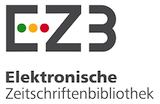OCCURRENCE OF Cryptosporidium spp. OOCySTS IN BULLFROG (Lithobates catesbeianus SHAW, 1802)
DOI:
https://doi.org/10.5216/cab.v12i1.3087Keywords:
Animal parasitologyAbstract
The objective of the present study was to detect the occurrence of Cryptosporidium spp. oocysts in intestinal mucosa scraping and feces samples from bullfrogs (Lithobates catesbeianus Shaw, 1802) confined at the school farm of Federal University of Uberlândia, MG, Brazil. The modified Ziehl Neelsen staining technique was used. Out of 28 fecal samples, 14.28% (4/28) were positive for Cryptosporidium spp., with 7.14% positive samples in feces of frogs under 3 months of age and 7.14% in feces of frogs over 3 months of age. Form the 16 intestinal scraping samples, 75% (10/16) were positive, 50% in tadpoles and 25% in adult frogs. This research allows the situation identification and the recommendation of measures to control this parasite, aiming at preventing or delaying the appearance of this parasitism in other animals, since it an important zoonosis to public health.KEYWORDS: Cryptosporidium spp, protozoan, bullfrog, Lithobates catesbeianus
Downloads
Download data is not yet available.
Published
2011-03-31
How to Cite
CABRAL, A. D.; HIPOLITO, M.; CABRAL, D. D.; DA SILVA, N. R. OCCURRENCE OF Cryptosporidium spp. OOCySTS IN BULLFROG (Lithobates catesbeianus SHAW, 1802). Brazilian Animal Science/ Ciência Animal Brasileira, Goiânia, v. 12, n. 1, p. 109–114, 2011. DOI: 10.5216/cab.v12i1.3087. Disponível em: https://revistas.ufg.br/vet/article/view/3087. Acesso em: 6 jan. 2025.
Issue
Section
Veterinary Medicine
License
Authors who publish with this journal agree to the following terms:
- Authors retain copyright and grant the journal right of first publication with the work simultaneously licensed under a Creative Commons Attribution License that allows others to share the work with an acknowledgement of the work's authorship and initial publication in this journal.
- Authors are able to enter into separate, additional contractual arrangements for the non-exclusive distribution of the journal's published version of the work (e.g., post it to an institutional repository or publish it in a book), with an acknowledgement of its initial publication in this journal.
- Authors are permitted and encouraged to post their work online (e.g. in institutional repositories or on their website) prior to and during the submission process, as it can lead to productive exchanges, as well as earlier and greater citation of published work (See The Effect of Open Access).





























